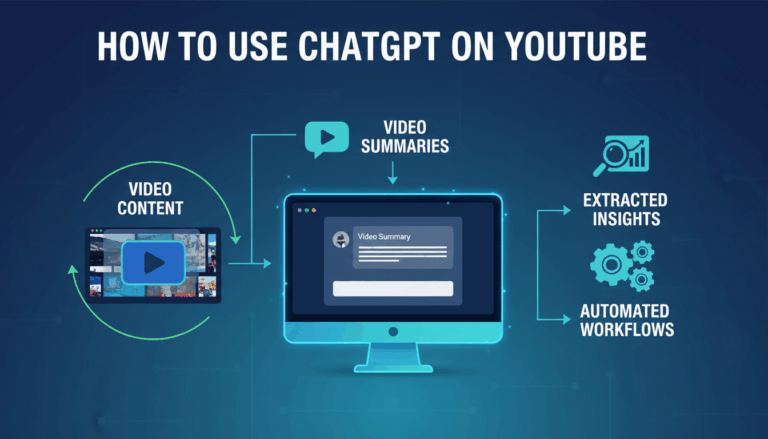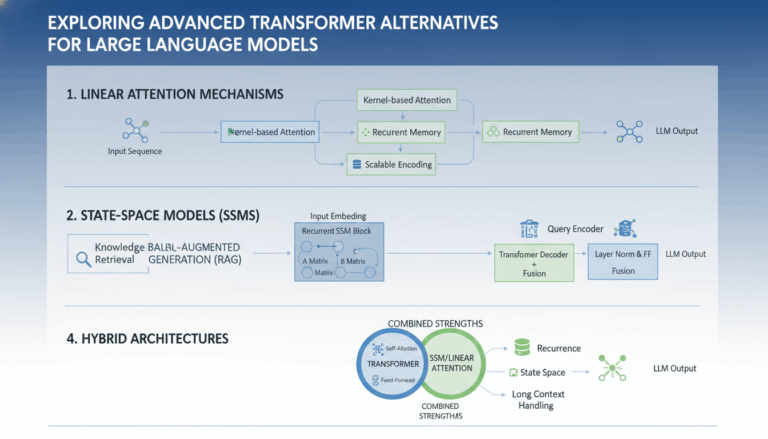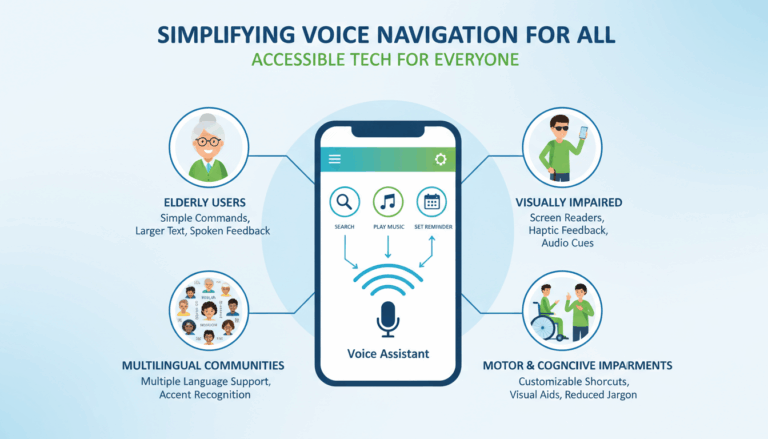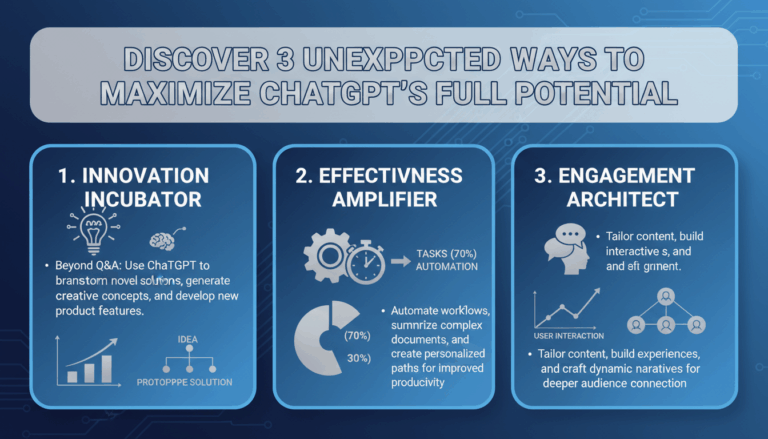Understanding Voice AI: An Overview
Voice AI represents one of the most transformative applications of artificial intelligence today, allowing machines to recognize, interpret, and respond to human speech. This technology leverages advancements in several AI fields, including natural language processing (NLP), machine learning (ML), and neural networks.
Voice AI systems use a combination of these technologies to process and understand spoken language. At the core of Voice AI are speech recognition systems, which convert spoken words into text. These systems work through a series of distinct stages:
-
Audio Input: The process begins when the system receives audio input through a microphone. The sound waves are then digitized for processing.
-
Feature Extraction: Once digitized, the system analyzes the audio signal to extract relevant features. This typically involves breaking down the audio into smaller, manageable pieces called frames. The system deciphers various characteristics of the sound, such as pitch and tone, which are critical for understanding different speakers and contexts.
-
Acoustic Modeling: The next stage involves acoustic modeling, where the system matches audio signals to corresponding phonemes, the building blocks of words. These models are trained using vast datasets, allowing the AI to identify speech patterns over time.
-
Language Modeling: Here, the focus shifts to predicting the sequence of words using context. Language models help the system piece together likely phrases or sentences based on the input, enhancing interpretation accuracy.
-
Speech Recognition Output: After audio processing, the system converts phonetic interpretations into textual data, which can then be further analyzed or acted upon by other AI components.
Voice AI’s proficiency goes beyond mere speech-to-text conversion. Advanced systems are equipped with natural language understanding (NLU) capabilities that enable them to grasp context and intent, offering responses that mimic human conversation. This involves:
-
Intent Recognition: Identifying a user’s intent is critical. For example, if a user asks a voice assistant for weather updates, the system must discern that the request is for current weather conditions rather than a forecast for another day.
-
Entity Recognition: Understanding context requires the AI to recognize specific entities within the conversation. For example, “Play the song ‘Imagine’ by John Lennon” involves recognizing ‘Imagine’ as the song title and ‘John Lennon’ as the artist.
-
Context Maintenance: Effective interaction over several exchanges necessitates maintaining the context, which allows for continuous dialogue flow, keeping track of previous information to ensure relevancy in responses.
Beyond daily consumer applications like virtual assistants or smart home devices, Voice AI is revolutionizing industries by facilitating hands-free operations in environments such as healthcare, customer service, and automotive. For instance, doctors can transcribe notes during consultations without physical input, or drivers can control vehicle functions safely without distraction.
Research is rapidly evolving in Voice AI, aiming for improved accuracy, reduced biases, and better handling of diverse languages and dialects. With ethical considerations like privacy and accessibility being at the forefront, the development of Voice AI continues to strive towards more nuanced and inclusive systems.
Voice AI’s journey is a testament to the power of artificial intelligence, illustrating how complex systems can transform everyday interactions by understanding and processing human language effectively.
Key Metrics for Evaluating Voice AI Performance
Evaluating the performance of Voice AI systems requires understanding a variety of metrics that determine their effectiveness, accuracy, and user satisfaction. Each metric provides insights into different aspects of system performance and helps identify areas for improvement, ensuring the Voice AI applications deliver optimal results.
A key performance indicator for Voice AI is Word Error Rate (WER), which measures the number of errors in speech recognition output compared to a reference transcription. WER is calculated by comparing three types of errors: substitutions, insertions, and deletions in recognized words against the actual words spoken. A lower WER indicates higher accuracy, making it a vital metric for assessing a system’s capability to process speech correctly. For instance, in a customer service context, even a small improvement in WER can significantly enhance user experience.
Latency is another crucial metric, referring to the delay between the end of a user’s speech and the system’s response. Low latency is essential for maintaining natural conversation flows and is particularly critical in applications like real-time language translation or interactive voice response systems. Developers must optimize processing speed and network efficiency to ensure that latency remains within acceptable bounds, often less than a few hundred milliseconds.
Speech Recognition Accuracy involves evaluating the system’s ability to correctly interpret words and phrases across various accents, dialects, and contexts. This accuracy is often tested using diverse datasets that mimic real-world usage, helping to ensure the AI performs reliably for a wide range of users. Continuous testing and training are required to adapt models to changes in language usage trends.
Natural Language Understanding (NLU) Precision and Recall track how well the system identifies intents and entities in user input. Precision measures the proportion of correctly identified intents and entities out of all identified, while recall measures the correctly identified ones against the total that should have been identified. Balancing precision and recall ensures Voice AI delivers contextually appropriate and comprehensive responses, which is vital in complex decision-making tasks like medical diagnoses or financial advice.
User Satisfaction and Engagement Metrics involve gathering feedback on users’ experiences with the Voice AI through surveys and interactive analytics. Tracking metrics like user retention rates and session lengths offers insights into how users interact with the system and whether it efficiently meets their needs. A Voice AI system with high user satisfaction typically shows a strong alignment between user expectations and system performance.
Finally, Error Analysis is a methodical approach to dissecting recognition errors post-deployment to uncover systemic issues. This analysis involves reviewing recorded interactions and identifying patterns in failures, such as misrecognitions caused by ambient noise or specific linguistic challenges. System developers can use error analysis to refine models and enhance robustness, ultimately contributing to a more resilient system.
Effectively evaluating Voice AI performance involves a multidimensional approach that not only considers the technical aspects like WER and latency but also emphasizes user-centric metrics. This comprehensive evaluation ensures the AI consistently aligns with user demands and technological advancements.
Tools and Frameworks for Voice AI Assessment
In the rapidly evolving field of voice AI, accurately assessing the capabilities and effectiveness of systems is crucial. A variety of tools and frameworks are available to facilitate comprehensive evaluation, each offering unique strategies and methodologies to ensure voice AI applications meet industry standards and user expectations.
Various commercial and open-source speech recognition toolkits are fundamental for testing and evaluating voice AI systems. These toolkits, such as Kaldi, DeepSpeech, and Google Cloud Speech-to-Text, offer robust platforms for conducting performance assessments.
-
Kaldi stands out due to its flexibility and modularity. It is popular for academic and research purposes, providing a rich set of tools to build and evaluate complex speech recognition systems. Kaldi supports various acoustic and language modeling, utilizing detailed scoring systems to assist in performance analysis.
-
DeepSpeech, developed by Mozilla, offers a simpler, more streamlined approach. Based on Baidu’s DeepSpeech research paper, it aims to enable developers to integrate speech recognition capabilities with relatively minimal setup. It’s particularly useful for those looking to implement lightweight, efficient speech solutions with a focus on easy deployment and scaling.
-
Google Cloud Speech-to-Text provides cloud-based capabilities that easily scale for large datasets. It includes advanced features like context-aware insights, speaker recognition, and multi-language support, which are key for assessing diverse performance aspects and user interactions.
Natural Language Processing (NLP) platforms like Rasa and Dialogflow are essential for evaluating the natural language understanding (NLU) capabilities of voice AI. They help ensure the system’s ability to accurately interpret user intents and entities.
-
Rasa provides an open-source framework for building and evaluating customized NLU models. It allows for extensive training on domain-specific intents and supports detailed analytics to measure precision and recall rates, aiding in the refinement of conversational abilities.
-
Dialogflow, powered by Google, is a versatile tool that allows for comprehensive language understanding evaluations. Its integration capabilities make testing interactive agent functionalities seamless, and its analytics feature provides insights into session flows, intent detection accuracy, and user satisfaction measures.
In addition to these platforms, specialized testing frameworks such as WER test suites and latency analysis tools are critical. These benchmarks help in quantifying core metrics like Word Error Rate (WER) and response delays, providing the empirical data needed to align system performance with user expectations.
-
WER Test Suites: Tools such as SCTK (Speech Recognition Scoring Toolkit) are incorporated to automate rigorous testing of speech recognition outputs against reference transcriptions. With built-in error analysis functionalities, these tools highlight substitution, insertion, and deletion errors that inform model training adjustments.
-
Latency Analysis: Real-time processing monitoring can be facilitated through performance profiling tools such as Apache ZooKeeper and Prometheus, aiding developers in spotting bottlenecks that cause delays. These tools provide real-time analytics and dashboards that visually represent processing timelines, enabling swift optimization of latency metrics.
Integrating these tools and frameworks into the development lifecycle streamlines the iterative process of enhancement, ensuring voice AI systems are not only technically sound but also capable of delivering rich, contextually appropriate user interactions. By maintaining a structured assessment approach with these advanced technologies, developers can achieve significant improvements in accuracy, user satisfaction, and system robustness over time.
Best Practices in Voice AI Evaluation
Evaluating the effectiveness of Voice AI systems involves implementing diverse methods and principles to ensure accuracy, efficiency, and usability. Adhering to best practices in this field is vital not only to enhance performance but also to meet user expectations and industry standards.
A fundamental principle is to develop a comprehensive evaluation framework tailored to the specific needs of the application. This involves defining key performance indicators (KPIs) such as word error rate (WER), latency, and user satisfaction metrics that align with the intended use of the Voice AI. Clear goals and benchmarks should be established based on these KPIs to guide the testing and improvement processes.
Conducting multifaceted testing across various conditions and environments is essential. Voice AI systems should be tested in real-world situations that mimic actual usage scenarios. This can include evaluating the system’s performance in noisy backgrounds, with different accents or dialects, and across various age groups. Such testing ensures that the AI maintains a high level of accuracy and usability regardless of external factors.
Implementing continuous learning and adaptation practices ensures that the system evolves with changing linguistic trends and improves over time. This involves regularly updating the system’s learning models with new data and user interactions to refine its understanding and responsiveness. By incorporating user feedback loops and real-time analytics, developers can dynamically adjust the AI’s operation and address shortcomings promptly.
Ensuring ethical considerations are incorporated into the evaluation process is also crucial. This means prioritizing user privacy and security by adhering to data protection regulations and ensuring transparent data usage policies. Developing mechanisms to handle sensitive data securely and implementing user consent management tools helps build trust with users.
Utilizing advanced error analysis techniques to diagnose and rectify recognition errors is another best practice. Analyzing errors such as mispronunciations or incorrect entity recognition through systematic review of AI interactions can reveal underlying issues in model design. This detailed investigation enables targeted interventions to correct and enhance the system’s capabilities.
Investing in user-centric design by continuously involving end-users in the evaluation phases can greatly enhance the Voice AI’s efficiency. Conducting user studies and collecting feedback can provide valuable insights into user expectations and pain points, leading to more intuitive and effective voice interfaces.
Finally, leveraging cross-functional collaboration between AI developers, linguists, and user experience designers can propel system evaluation to more comprehensive levels. By integrating diverse expertise, especially in fields like natural language processing and machine learning, a more holistic approach to evaluating and enhancing Voice AI systems can be achieved.
These practices ensure that Voice AI systems are not only functionally robust and technologically sound but also provide meaningful and satisfying user experiences. These collective efforts pave the way for transformative applications capable of seamlessly interacting with users in dynamically complex environments.
Addressing Challenges in Voice AI Evaluation
Successfully evaluating Voice AI systems involves addressing a series of multifaceted challenges that stem from the complexities of human language and the diversity of real-world environments. One of the primary hurdles is the inherent variability in how people speak. Accents, dialects, speech impediments, and even emotional tone can drastically alter the system’s ability to accurately interpret voice inputs.
To tackle this, Voice AI systems must be trained using extensive and diverse datasets that reflect real-world usage. These datasets should encompass a wide range of speech patterns, linguistic nuances, and background noise scenarios. Effective training requires curated data that accurately represents the target user demographic and includes anomalous speaking patterns to enhance robustness.
Another significant challenge lies in the continuous adaptation and updating of language models to keep pace with evolving vernacular and emerging slang. Language is dynamic and rapidly changing, which necessitates ongoing updates to the system’s vocabulary and contextual understanding. Incorporating tools and practices for regularly refreshing training datasets and fine-tuning models can mitigate the risk of obsolescence and improve the system’s adaptability.
Balancing accuracy with processing speed is also crucial, as slow response times can severely impact user experience. Achieving low latency is essential for maintaining natural conversational flow, especially in real-time applications like customer support bots or virtual assistants. This necessitates optimizing computational processes and leveraging high-efficiency algorithms to reduce processing delays without sacrificing accuracy.
Furthermore, bias mitigation remains an essential yet challenging aspect. Unintended biases in AI models can lead to skewed understanding or inadvertently discriminatory practices. To address this, developers should implement bias detection and correction mechanisms. Regular audits of system outputs against diverse demographic data can help identify and rectify biased behavior in Voice AI systems.
Privacy concerns also present a persistent challenge in the evaluation and deployment of Voice AI systems. Users are increasingly aware of and sensitive to how their voice data is collected and used. Ensuring compliance with data protection regulations like the GDPR involves implementing robust data security measures and transparent consent practices. Encryption of audio data and anonymization of user inputs can help maintain user trust and legal compliance.
Incorporating real-time feedback loops is another effective strategy for addressing challenges in Voice AI evaluation. By enabling systems to learn from user interactions continuously, developers can refine AI performance dynamically. Feedback mechanisms can include user correction features, such as confirming or altering AI output in real-time, thereby enhancing learning accuracy.
Engaging in cross-disciplinary collaboration is pivotal. Utilizing insights from linguistics, human-computer interaction, and artificial intelligence fields fosters a more holistic approach to tackling these challenges. Diverse expertise contributes to comprehensive solutions that enhance both technological soundness and user satisfaction.
Effectively addressing these challenges demands a dynamic, multifaceted approach that is responsive to both technological advancements and the evolving needs of users. Through diverse data representation, adaptive learning strategies, and ethical considerations, Voice AI systems can be evaluated and improved to deliver accurate, inclusive, and reliable performance.



